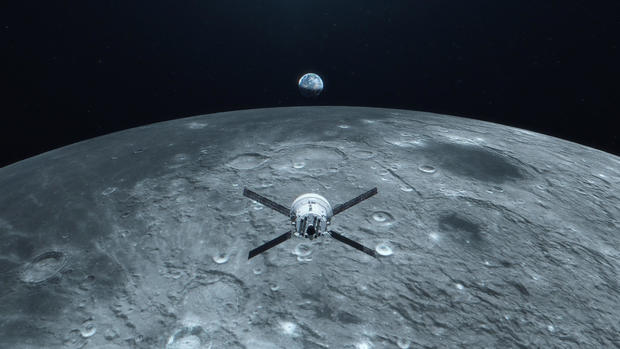NASA is poised to launch its most powerful rocket ever for a critical, long-overdue test flight Monday, sending an uncrewed Orion capsule on a 42-day voyage around the moon.
The mission, known as Artemis 1, is the first major milestone in a program that aims in the next few years to launch astronauts to orbit the moon and eventually land near the lunar south pole, laying the groundwork for a base to support future missions to Mars.
Launch from the Kennedy Space Center in Florida is currently scheduled for 8:33 a.m. EDT Monday, the start of a two-hour window. NASA said Sunday that the countdown was proceeding smoothly, with an 80% chance of good weather at the opening of the launch window, decreasing to around 60% later in the morning.
At liftoff, the Space Launch System —SLS — will generate a ground-shaking 8.8 million pounds of thrust from four shuttle-era hydrogen-fueled engines and twin solid rocket boosters packed with 25% more propellant than their shuttle predecessors, providing a breathtaking spectacle for thousands of spaceport workers, area residents and tourists.
CHANDAN KHANNA/AFP via Getty Images
“I’m afraid that people think it’s routine,” NASA Administrator Bill Nelson told CBS News. “But when those candles light off, it’s anything but routine. It is high-wire act all the way up. … This is a big deal. And it is beautiful. And it is a monster! The size just overwhelms you.”
The primary goal of the Artemis 1 mission is to send Orion to orbit around the moon and then return in a 25,000-mph plunge back into Earth’s atmosphere on October 10. The top priority of the mission is to make sure the capsule’s 16.5-foot-wide heat shield can withstand the 5,000-degree inferno of re-entry and protect astronauts on a future flight.
NASA
“This is a test flight. It’s not without risk,” Bob Cabana, a former shuttle commander and now a NASA associate administrator, said of the first SLS flight. “We have analyzed the risk as best we can and we’ve mitigated it as best we can. But we are stressing Orion beyond what it was actually designed for in preparation for sending it to the moon with a crew.
“And we want to make sure it works absolutely perfectly when we do that and that we understand all the risks,” he said. “We’re going to learn a lot from this test flight.”
Stay connected with us on social media platform for instant update click here to join our Twitter, & Facebook
We are now on Telegram. Click here to join our channel (@TechiUpdate) and stay updated with the latest Technology headlines.
For all the latest Technology News Click Here


